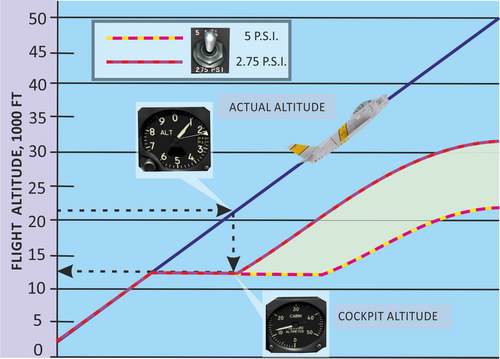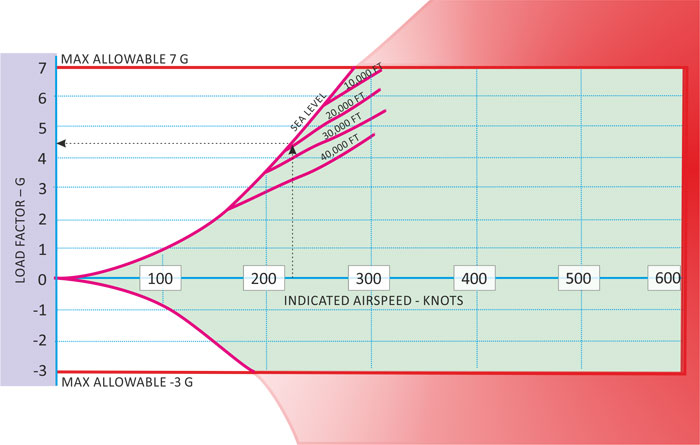The North American F-86F Sabre is a day, clear weather, transonic fighter-interceptor with a secondary ground attack capability. The foremost US fighter of the Korean War (1950-53), the F-86 was the only Allied jet that could hold its own – and in the right hands, outmatch - the Russian-made MiG-15s over the bitterly-contested North Korean airspace known as ‘MiG Alley’.
The F-86F is armed with six .50 in/12.7 mm Colt-Browning М3 machine guns, with a rate of fire of 1100 rounds per minute and 300 rounds per gun. A game-changer at the time, the Sabre’s excellent APG-30 gunsight helped give it the edge in dogfights, enabling accurate fire at longer ranges. It can also carry two AIM-9B Sidewinder missiles. For air-to-ground strikes the F-86 can deliver up to sixteen HVAR unguided rockets or pairs of AN-M64 500lb or M117 750lb General Purpose bombs.
Powered by a single General Electric J47-GE-27 turbojet providing 5,910 lbs of thrust, the F-86F has a maximum speed of 595 knots at sea level, a rate of climb of 9,000 fpm to 49,600 feet and a combat radius of about 600 nautical miles.
Almost 10,000 were built, making the F-86 the most-produced Western jet-fighter of all time. Exported to many countries, it saw service with almost 30 air forces. It last saw action flying in Pakistani Air Force colors during the 1971 war with India.
Experience the strengths and challenges of the Sabre in combat and find out why seasoned fighter pilots often look back on it as the most enjoyable aircraft they ever flew.
In our simulation, just like in the real F-86F, the pilot's health state in all the range of altitude and speeds is provided by two systems:
Both systems use hot air from behind the engine compressor, and for this reason they are combined into one environment control system.

Pressure in the cockpit is maintained by the airflow from vent openings and is set by a differential pressure regulator depending on altitude. The greater the altitude, the more differential pressure (altitude difference) in the pilot's cockpit to maintain the normal vital functions.

Thus, if a player does not observe the environmental control system settings, a "loss of consciousness" and "windshield weeping" may occur.
The flight dynamics model describes the aerodynamic performance of the F-86F with the J47-GE-27 engine and the "6-3" wing of increased area without a drooping slat.
During the simulation, complex calculations of the characteristics of the aircraft constituent elements are performed taking into account their mutual influence in all the range of local angles of attack and of sideslip (including beyond stall angles as well), local ram-air flows and Mach numbers taking into account control deflections, and the level of destruction of certain elements of airframe and control surfaces.
As a result of the simulation, a series of aerodynamic peculiarities of the model should be noted, which according to the available documentation, are typical for the real aircraft.
Between high indicated airspeed and Mach number (within the flight restrictions), a series of unique characteristics manifest themselves in aircraft behaviour.
Starting at Mach 0.9, unintentional roll (wingheaviness) (to the left or to the right) manifests itself and it strengthens as the Mach number increases up to its limit values. Appearance of this wingheaviness is associated with the geometric asymmetry of half-wings and also with their unequal flexural-and-torsional load-deflection curves. The wingheaviness is accompanied by a significant decrease of the aileron effectiveness related to wave effects and wing deformation during their deflection.
The airflow compressibility influence on longitudinal flying qualities at high speeds remains insignificant up to Mach 0.95. With further increase of the Mach, the aircraft demonstrates excessive tendency to pitching-up, the compensation of which requires additional pushing force on the control stick.
Due to the above-mentioned peculiarities of the aircraft behaviour, the indicated air speed is restricted to 600 knots.
Reason: Developing wing heaviness at considerable decrease of the aileron effectiveness (at high values of the Mach number) and additional wing bending and wing torsion under the action of the airflow at aileron deflection.
Acceleration higher than the value of Mach 0.93 is only possible when descending.
At all speeds, the aircraft is sensitive to longitudinal control. This is especially true between Mach 0.8-0.9 and indicated air speed values over 500 knots.
The aircraft has relatively high maneuverability at all speeds. Here it should be taken into account that in order to execute most manoeuvers, a slight tail unit deflection (especially pitching displacement) is required.
However, at medium and low altitudes and indicated air speed over 500 knots, roll control becomes slow. This is due to the wing bending and wing torsion. Simultaneously, the aileron effectiveness decreases, which makes it difficult to maneuver at speeds over 550 knots.

A characteristic feature of piloting is hyperreaction to longitudinal input of the control stick. This feature may lead to a stall of the aircraft or to exceed the operational glideslope.

The warning factor of exceeding the maneuver limitation is the starting wing stalling accompanied by shaking and departure tendency. Piloting at the shaking mode is possible but requires particular attention to the aircraft behaviour and timely decrease of the g force (angle of attack) at a decrease of the indicated air speed of the flight.








